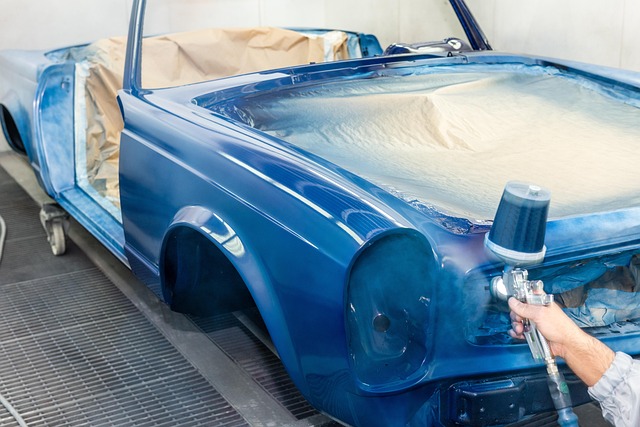Compare Pipe Repair Service Costs: Save Money on Repairs

When comparing pipe repair services, consider damage extent, pipe type, age, and location. Request r…….
In the intricate web of infrastructure that sustains modern societies, pipe repair services stand as vital contributors, ensuring the smooth flow of resources essential for daily life. This article aims to delve into the multifaceted world of pipe repair, offering a comprehensive guide to its significance, operations, and future prospects. By exploring various facets, from historical context to technological innovations, we will uncover the critical role this service plays in shaping our interconnected world.
Definition: Pipe repair service refers to the specialized technical expertise and processes employed to identify, assess, and rectify defects or damage in piping systems. These systems are integral to various industries, including water supply, sewage treatment, oil and gas distribution, heating, and cooling.
Core Components:
Inspection: The initial step involves non-destructive testing methods like visual inspection, pressure testing, and ultrasound scanning to identify potential issues such as leaks, corrosion, or structural weaknesses.
Assessment: Repairs require thorough evaluation of the damage, considering factors like scope, cause, and impact on system performance. This stage often employs advanced diagnostic tools.
Reparation: Skilled technicians utilize a range of techniques, from simple welding and sealing to complex relining or replacement, depending on the severity of the damage.
Historical Perspective:
The practice of pipe repair has evolved over centuries, reflecting technological advancements and growing infrastructure demands. Early methods were primarily manual, involving labor-intensive processes like digging and replacing sections of pipes. The industrial revolution brought mechanization, introducing tools like the backhoe and more efficient welding techniques. Modern times have seen a surge in advanced technologies, such as robotic pipe inspection and relining methods, ensuring faster and more precise repairs.
Pipe repair services are a global phenomenon, yet their impact varies across regions due to differing infrastructure needs and economic conditions.
| Region | Key Trends | Impact |
|---|---|---|
| North America | Increasing adoption of advanced robotic inspection and relining technologies | Enhances efficiency and reduces costs for large-scale piping networks |
| Europe | Stricter environmental regulations driving demand for eco-friendly repair methods | Promoting the use of sustainable materials and techniques in pipe replacement |
| Asia Pacific | Rapid urbanization leading to extensive water infrastructure development | Increased need for specialized services, particularly in complex urban environments |
| Middle East & Africa | Focus on energy sector growth influencing oil and gas pipeline maintenance | High investment in advanced piping systems and regular repair programs |
The pipe repair market is a significant segment of the global infrastructure maintenance industry, valued at approximately $45 billion in 2022. This market dynamics are shaped by several factors:
Technological innovations have been pivotal in transforming pipe repair from a labor-intensive process into a more efficient, cost-effective operation. Notable advancements include:
Robotic Inspection: Remote-controlled robots equipped with cameras and sensors can access hard-to-reach areas, providing detailed inspection data. This technology reduces the need for manual inspections, enhancing safety and accuracy.
Pipe Relining: A non-invasive repair technique involves inserting a flexible tube into existing pipes, inflating it to create a new, smooth interior surface. This method is ideal for repairing corroded or damaged pipes without excavation.
Advanced Materials: Newer materials like high-density polyethylene (HDPE) and fiber-reinforced composites offer enhanced durability, corrosion resistance, and lighter weights compared to traditional materials.
Regulatory frameworks play a crucial role in ensuring the quality and safety of pipe repair services, particularly in critical infrastructure sectors. Key considerations include:
Despite its advancements, the pipe repair service sector faces several challenges:
Proposed Solutions:
The City of London implemented a smart water pipeline network, utilizing advanced sensors and fiber optics to monitor pressure, flow rates, and leaks in real time. This digital transformation enabled predictive maintenance, significantly reducing pipe repairs. The system’s success lies in its ability to provide continuous data, allowing for proactive issue resolution.
Los Angeles launched a multi-year sewer rehabilitation program, focusing on relining older pipes to prevent collapses and reduce the risk of raw sewage spills. This initiative involved using advanced relining techniques, resulting in improved system integrity and reduced maintenance costs over time.
The pipe repair service industry is poised for growth, driven by several emerging trends:
Pipe repair services are an indispensable component of modern infrastructure, ensuring the reliable transmission of essential resources across diverse sectors. From technological advancements to global trends, this industry continues to evolve, addressing challenges while embracing innovations. As societies become increasingly reliant on intricate piping networks, the expertise and dedication of pipe repair professionals will remain crucial in maintaining and enhancing our interconnected world.
Q: How often should pipes be inspected for repairs?
A: The frequency depends on various factors, including pipe age, material, and usage. Regular inspections (every 3-5 years) are recommended for older pipes to prevent catastrophic failures.
Q: Are there environmental benefits to pipe repair?
A: Absolutely! Repairs reduce the need for new pipeline construction, minimizing environmental disruption during installation. Eco-friendly materials also contribute to a greener infrastructure.
Q: Can robotic repairs replace human technicians entirely?
A: While robots excel at certain tasks, human expertise remains vital. They assist in complex repairs, quality assurance, and specialized maintenance tasks that require adaptability and problem-solving skills.
Q: How do I know if my home’s pipes need repair?
A: Signs include slow-flowing water, unusual noises, or visible damage. Regular plumbing inspections by professionals can identify potential issues early, preventing costly repairs.

When comparing pipe repair services, consider damage extent, pipe type, age, and location. Request r…….